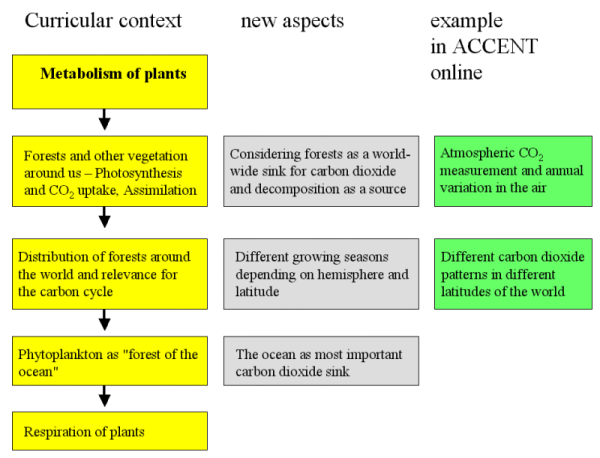 > ACCENT en > No 1 May 2005 vegetation/CO2 > I: Information for Teachers
> ACCENT en > No 1 May 2005 vegetation/CO2 > I: Information for Teachers
|
Information for Teachers |
|
Solutions and further information: Find further material and solutions in the ACCENT material corner for this edition. What are pupils expected to learn? The content of this online magazine can be integrated in the context of studying the forest as our environment, biomass formation and the process of photosynthesis in plants.
Suggestion for further work: You will find CO2 data for different time ranges and with different resolution for four measurement stations in the Material corner (pure text and Excel format).
|
|
Curricular context The content of the ACCENT online material can for example be integrated as application in classes in the context of plant metabolism in biology lessons. Depending on how much of the material is used, an integration is possible in 1 - 2 lessons. Metabolism, photosynthesis and respriration (assimilation and dissimilation) should be essential key contents in any curriculum and the forest is a typical example in this context. However, with respect to the fact that 71% of the Earth is covered by oceans, also phytoplankton life-cycles in the ocean could be considered as additional content of teaching. Here the following ESPERE material may be supportive: Oceans - Basics - Unit 2: Phytoplancton and nutrients in the ocean
|
 |
|
|
